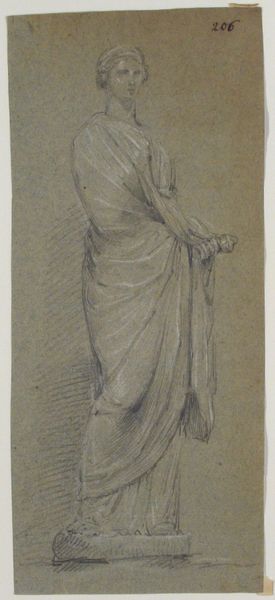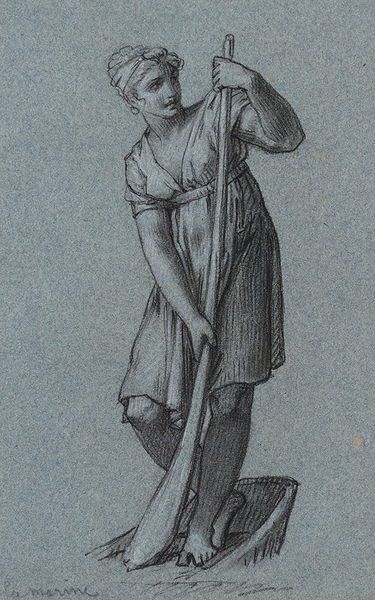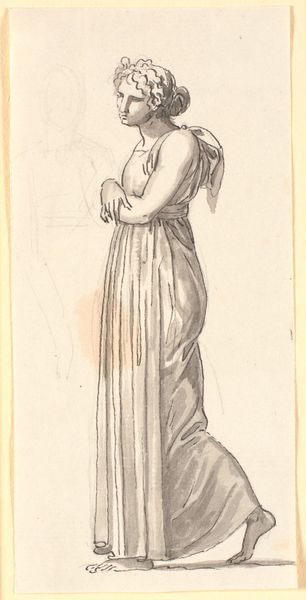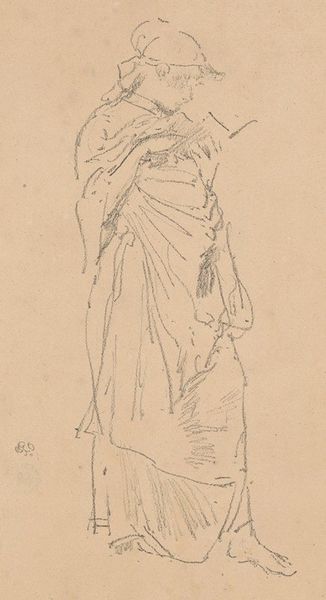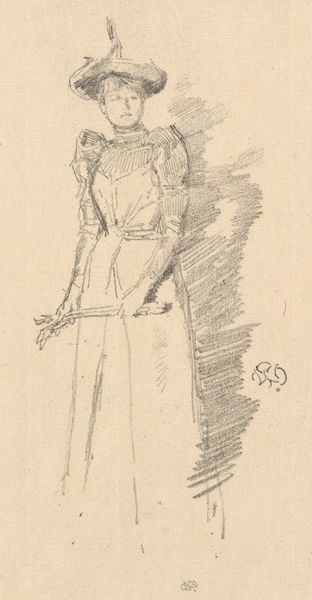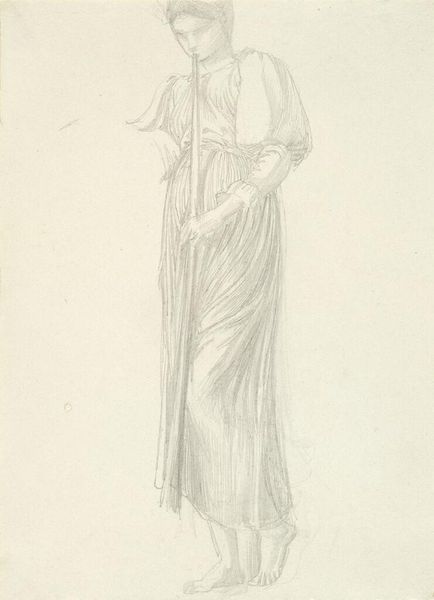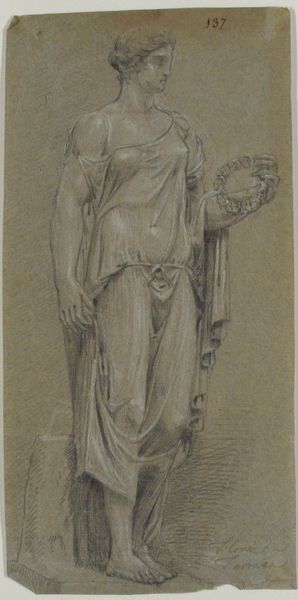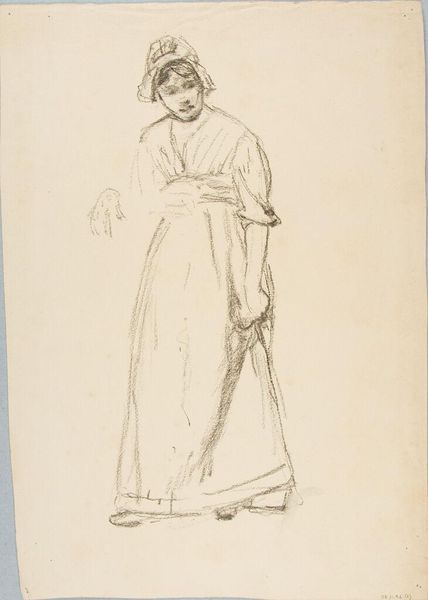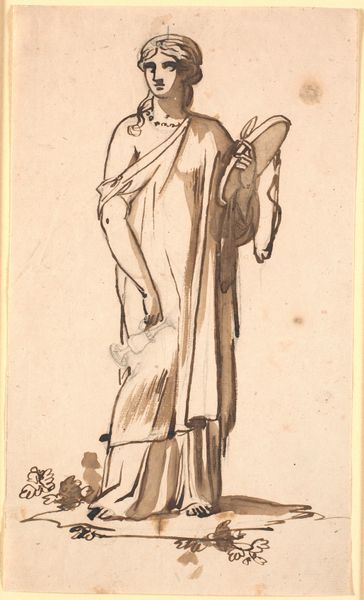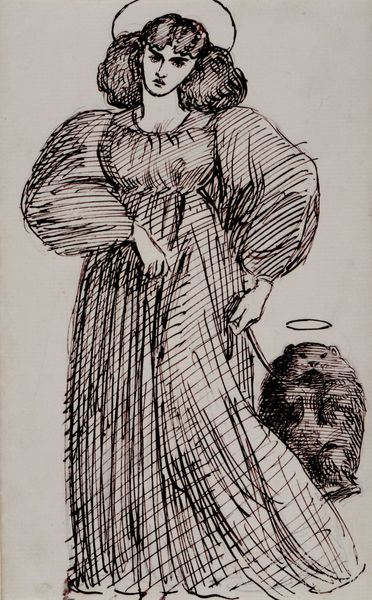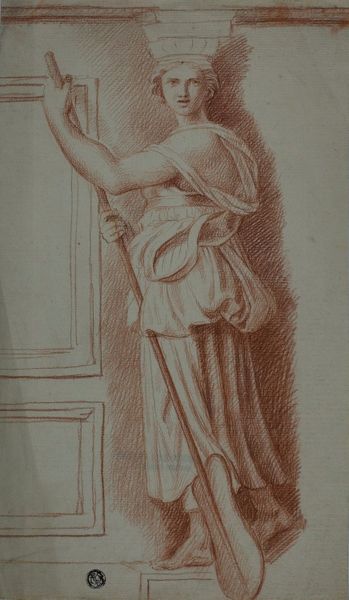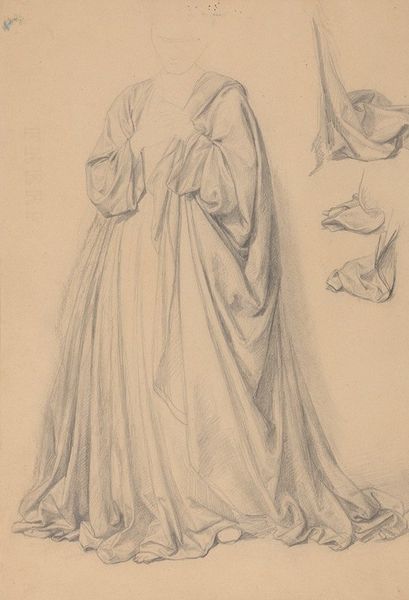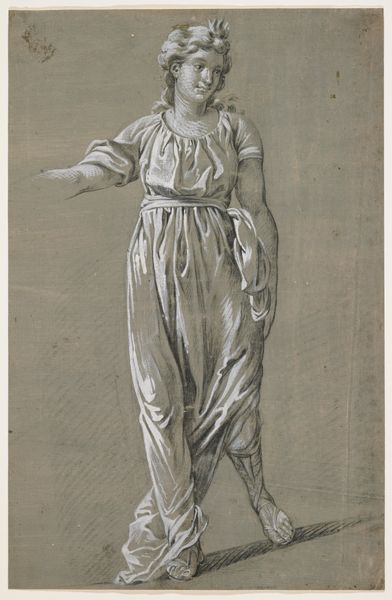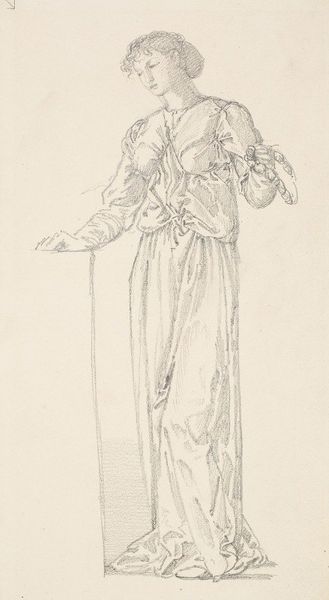
Dimensions: sheet: 8 1/16 x 4 1/16 in. (20.5 x 10.3 cm)
Copyright: Public Domain
Curator: Let's spend some time with this delicate 18th-century pencil sketch, "Drawing after the "Juno Cesi"." It resides here at The Metropolitan Museum of Art, attributed to an anonymous artist. Editor: You know, the first thing I see is…marble. Even though it's just pencil on paper. The shading gives her solidity, like a cool statue holding court in a blue dream. Curator: Precisely. This work belongs to a broader historical moment when prints and drawings circulated antique forms like the "Juno Cesi" across Europe, shaping Neoclassical aesthetics and taste. It demonstrates the importance of studying ancient sculpture for aspiring artists. Editor: An artist learning from a copy of a statue. That feels so many layers removed from life, but the folds of her dress feel strangely alive. I mean, it’s just lines, but I can practically feel the weight of the fabric. Curator: These kinds of drawings after antiquities were a crucial part of artistic training. Academic art emphasized idealizing the human form. The “Juno Cesi,” itself a Roman copy of a Greek original, offered artists models of beauty, poise, and proper drapery. Editor: All these layers, and yet…she feels so stiff. It's a drawing of a statue based on another statue. The original inspiration is so distant, it feels fossilized. Is it just meant to be skillful draftsmanship for the sake of draftsmanship? Curator: Not entirely. These drawings played a vital role in disseminating classical ideals more broadly. Prints made from such drawings were acquired by collectors and disseminated knowledge of antiquity throughout the 18th and 19th centuries. They weren’t merely technical exercises; they were integral to the cultural landscape. Editor: Right. I see the "big picture". She's less of an individual, more of a symbol being passed around. And that’s the beauty, isn’t it? She's a cipher, a carrier. That’s the cool distance of the neoclassical. Curator: Precisely. Seeing this drawing within its historical and cultural context makes it far more than a pretty sketch, don’t you think? Editor: It's not just the pencil miles—it’s the historical distance. Juno Cesi looks timeless but stands in her own time. A subtle commentary on the echoes of the past in the present. Thanks for helping me see that.
Comments
No comments
Be the first to comment and join the conversation on the ultimate creative platform.
